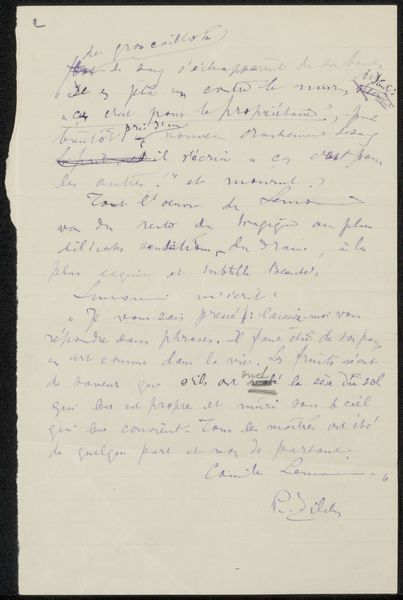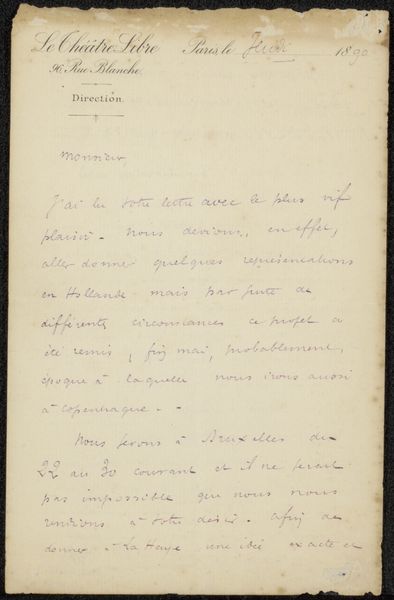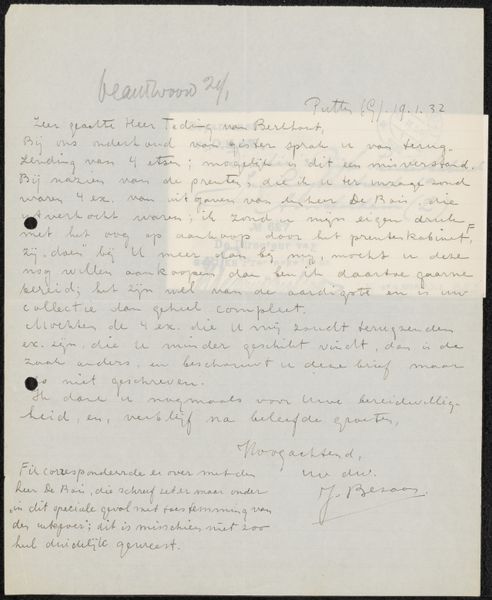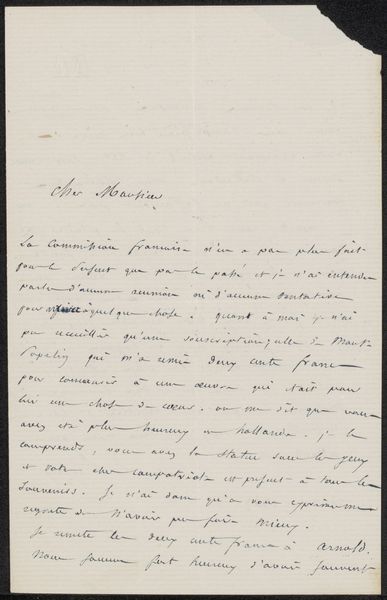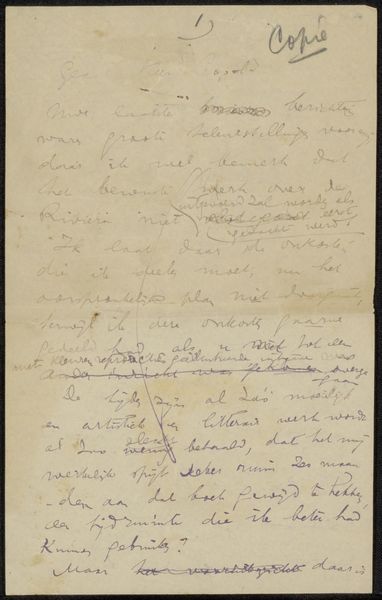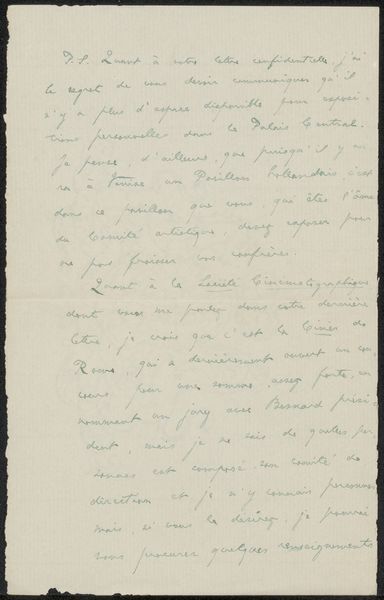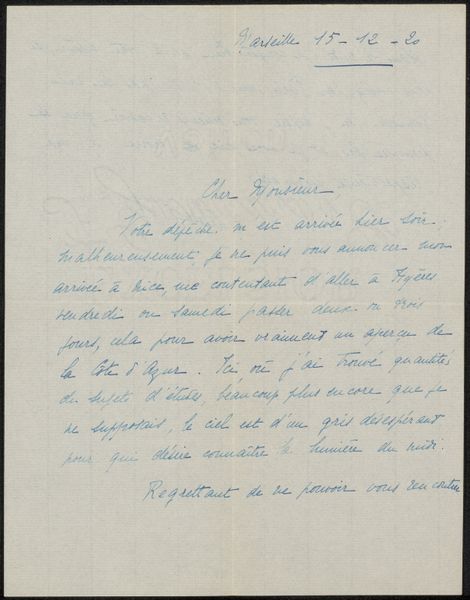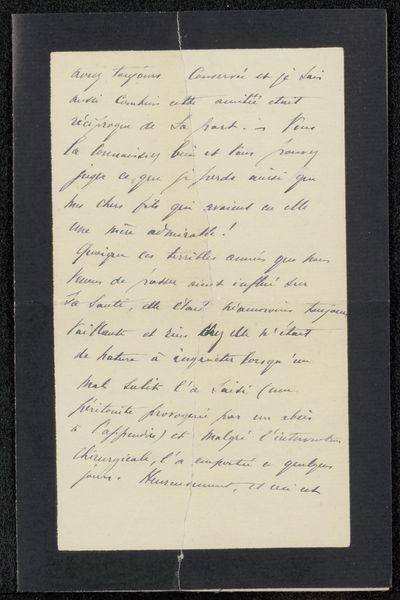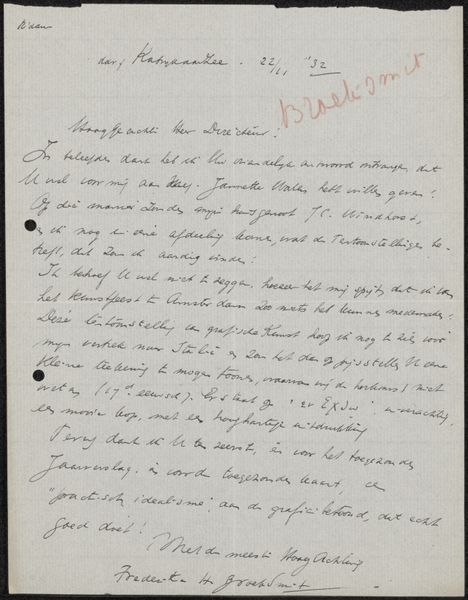
drawing, etching, paper, ink, pen
#
drawing
#
aged paper
#
hand-lettering
#
ink paper printed
#
etching
#
hand drawn type
#
hand lettering
#
paper
#
personal sketchbook
#
ink
#
hand-drawn typeface
#
ink drawing experimentation
#
intimism
#
sketchbook drawing
#
pen
#
sketchbook art
#
calligraphy
Copyright: Rijks Museum: Open Domain
Curator: This piece is called "Transcriptie van een brief aan Philip Zilcken," made sometime after 1892. It's held at the Rijksmuseum, and it combines etching and drawing in ink on paper. Editor: My first thought is that it’s surprisingly intimate. There's something very personal about seeing this handwritten transcript, it feels almost like trespassing on someone’s thoughts. Curator: That sense of intimacy is crucial, aligning perfectly with the late 19th-century trend of Intimism in art. Think of it within the context of artistic circles corresponding and sharing ideas through letters. Editor: How do you see this letter reflecting that wider trend, politically, for instance? Curator: Well, consider that correspondence – the very act of writing and sharing one's thoughts - was in itself a political act. It was a mode of creating community, disseminating ideas, and challenging norms outside of established institutions. The act of transcription here then emphasizes not only its significance to Zilcken, but to the one who bothered to create this artwork later on. Editor: It’s intriguing that the artist chose to create this transcript of a letter. Does that suggest a certain reverence for the original correspondence? A desire to preserve or amplify the writer's voice? Curator: Precisely! It’s about recognizing the significance, maybe even canonizing it in a way. Also the letter itself is from Stéphane Mallarmé, discussing Verlaine; those names aren't selected randomly. This form also resists traditional art forms. Editor: So, seeing this displayed within a museum setting – does that not run contrary to the anti-establishment feel this invokes? Is this form radical merely by existing on the gallery walls? Curator: It's a point of tension. The museum displays a slice of this art world, yet risks neutralizing the very dialogues that originally defied institutional capture. Yet, it's essential to preserve such dialogues for newer generations. Editor: Indeed. Understanding art as conversation emphasizes its constant negotiation of power, identity, and artistic legacy.
Comments
No comments
Be the first to comment and join the conversation on the ultimate creative platform.


